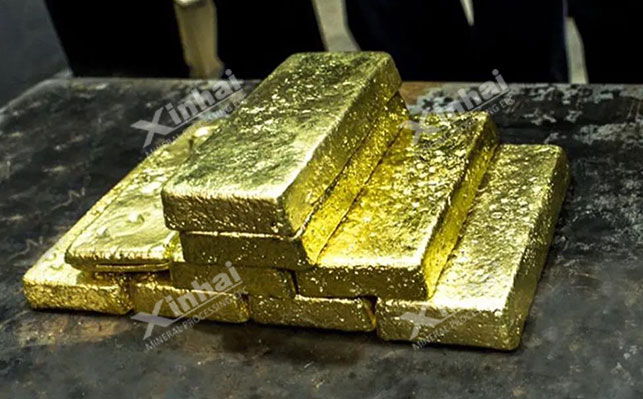The extraction of gold from its ore is a complex and fascinating process that has intrigued humanity for centuries. A critical aspect of this process is understanding the yield of gold per ton of ore, commonly known as the grade of the ore deposit. The grade plays a pivotal role in determining the economic viability and profitability of a mining operation. In this article, we will explore the concept of gold grade, factors influencing it, and how mining companies maximize the extraction of this precious metal from ore.

Gold grade refers to the concentration of gold within a given quantity of ore and is typically expressed in grams of gold per metric ton (g/t). For example, a gold grade of 5 g/t means that in every metric ton of ore, there are 5 grams of gold. The grade serves as a key metric in assessing the economic potential of a gold deposit. Higher-grade ores are generally more desirable, as they contain more gold and require less processing to extract the same amount of gold compared to lower-grade ores.
Various geological, environmental, and economic factors influence the grade of gold in ore deposits. Some of the key factors include:
a. Geological Setting: The geological environment in which the gold deposit formed plays a crucial role in determining its grade. Certain geological processes, such as hydrothermal activity, can lead to the concentration of gold in specific areas, resulting in higher-grade deposits.
b. Mineralogy: The type of minerals associated with gold in the ore can impact its grade. Some minerals may contain more gold than others, leading to variations in the overall grade of the deposit.
c. Ore Type: Different types of gold deposits, such as epithermal, porphyry, or placer deposits, exhibit varying gold grades. For instance, placer deposits often have lower grades due to the natural sorting of gold by water action.
d. Mining Depth: The depth at which the ore is located can affect its grade. In many cases, as mining goes deeper, the gold grade tends to decrease, requiring more effort and resources to extract the same amount of gold.
e. Ore Texture: The physical characteristics of the ore, such as grain size and texture, can influence the ease of gold extraction. Finely disseminated gold particles may require more complex extraction methods than coarser-grained gold.
To determine the gold grade of an ore deposit, geologists take representative samples from drill cores or mining faces. These samples are then subjected to laboratory analysis using various methods, such as fire assay, atomic absorption spectroscopy, or inductively coupled plasma-mass spectrometry (ICP-MS). The results of the analysis provide an accurate representation of the gold content in the ore, allowing mining companies to assess the deposit's economic potential.
Mining companies typically report the average grade of a deposit based on comprehensive sampling and analysis. This average grade serves as a critical parameter in financial assessments and feasibility studies for potential mining projects.
Mining companies employ several strategies to maximize gold extraction from ore deposits:
a. Resource Evaluation: Comprehensive resource evaluation through detailed geological studies and sampling ensures a thorough understanding of the deposit's grade and tonnage.
b. Selective Mining: In operations with variable gold grades, selective mining techniques are employed to extract higher-grade sections first, optimizing gold recovery.
c. Ore Sorting: Ore sorting technologies, such as X-ray transmission or laser-induced breakdown spectroscopy (LIBS), are used to separate higher-grade ore from lower-grade material before processing, reducing overall costs.
d. Advanced Processing Techniques: Implementing state-of-the-art processing methods, such as bioleaching or fine grinding, can enhance gold recovery from low-grade ores.
e. Environmental Considerations: Sustainable mining practices that prioritize environmental protection and waste management are vital for responsible gold extraction.
The concept of gold grade, determining how much gold is extracted per ton of ore, is a crucial factor in the economics of gold mining. Understanding the factors influencing gold grade and adopting innovative extraction techniques play a significant role in the success and sustainability of mining operations. As technology continues to advance, the mining industry will strive to strike the perfect balance between maximizing gold recovery and minimizing environmental impact, ensuring a golden future for this precious metal.